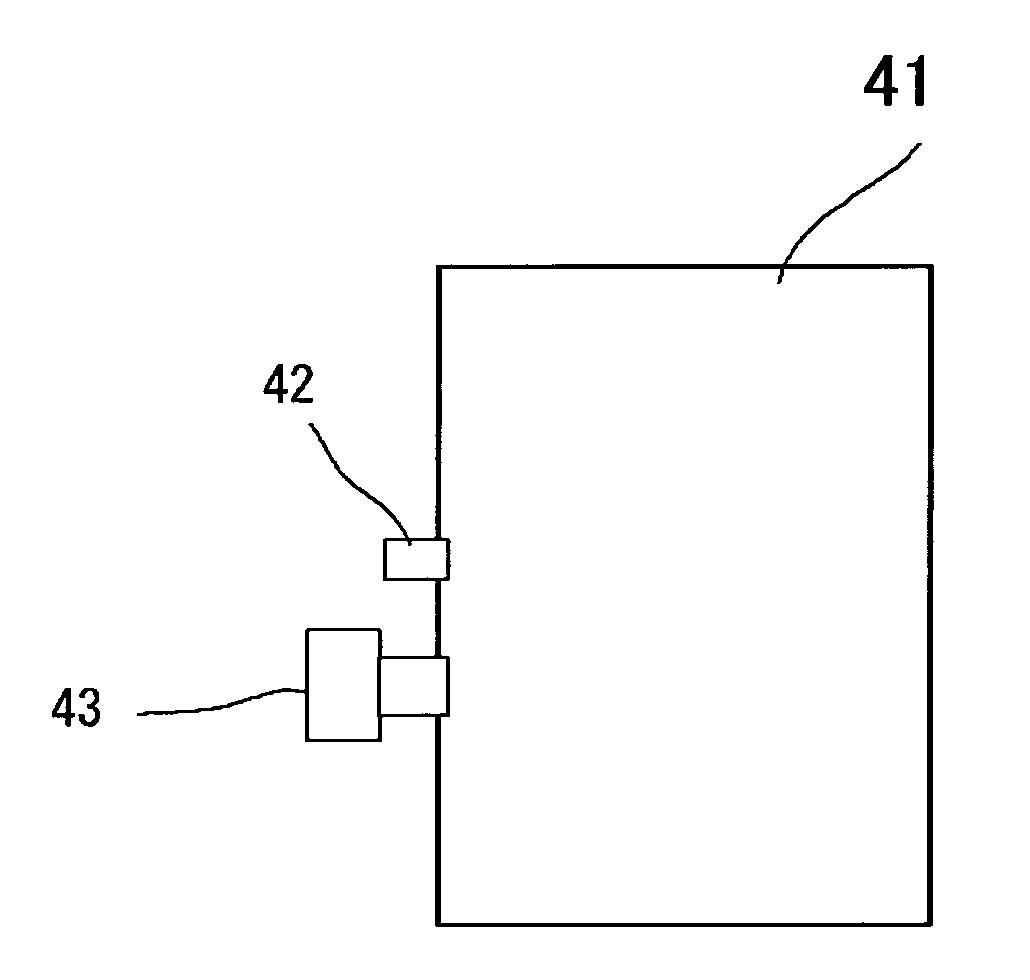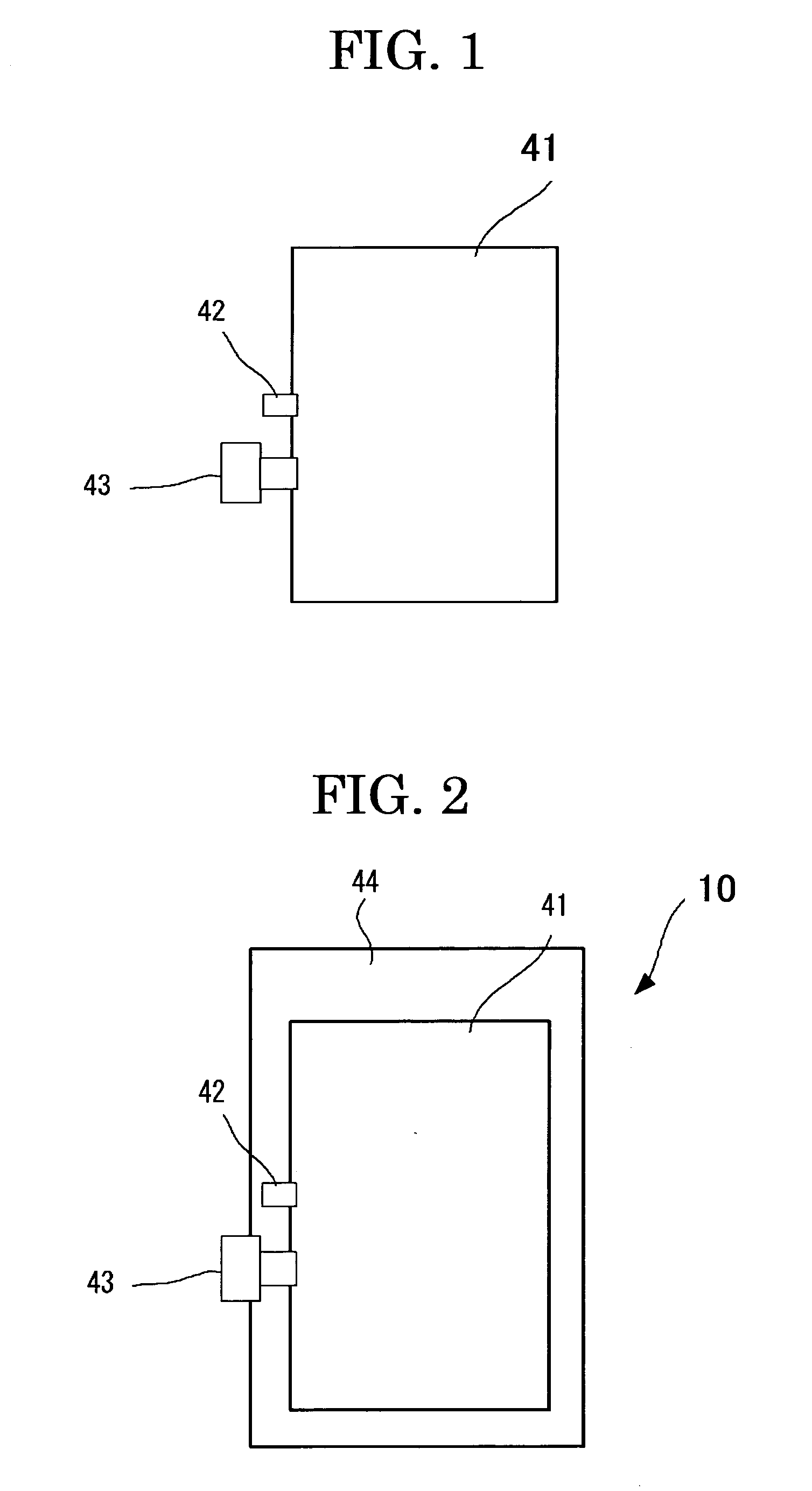Refill ink and ink cartridge
- Summary
- Abstract
- Description
- Claims
- Application Information
AI Technical Summary
Benefits of technology
Problems solved by technology
Method used
Image
Examples
production example 1
Preparation of Refill Ink No. 1 (Black Ink)
[0138]An ink composition with the following formulation was produced and sufficiently agitated at room temperature, then it was filtered through a membrane filter of 0.8 μm in average pore diameter, and refill ink No. 1 was thus produced.[0139]carbon black (BONJET CW-1 produced by Orient Chemical Industries, Ltd.) . . . 30%[0140]glycerin . . . 7.5%[0141]diethylene glycol . . . 22.5%[0142]2-pyrrolidone . . . 2%[0143]surfactant (ECTD-3NEX produced by Nikko Chemicals Co., Ltd., polyoxyethylene alkyl ether acetate) . . . 1%[0144]silicone antifoaming agent (KS-508 produced by Shin-Etsu Chemical Co., Ltd., self-emulsifying type) . . . 0.1%[0145]ion-exchange water . . . the rest of the amount
production example 2
Preparation of Refill Ink No. 2 (Yellow Ink)
—Production of Yellow Pigment Dispersion Solution 1—
[0146]The following constituents were mixed together, then the mixture was dispersed by means of a wet sand mill and centrifuged to remove coarse particles, and a yellow pigment dispersion solution 1 was thus produced.[0147]C. I. Pigment Yellow 97 . . . 30%[0148]polyoxyethylene oleyl ether ammonium sulfate . . . 15% by mass[0149]ethylene glycol . . . 30% by mass[0150]deionized water . . . the rest of the amount
—Production of Yellow Ink—
[0151]An ink composition with the following formulation was produced and sufficiently agitated at room temperature, then it was filtered through a membrane filter of 1.2 μm in average pore diameter, and refill ink No. 2 was thus produced.[0152]yellow pigment dispersion solution 1 . . . 10%[0153]glycerin . . . 8%[0154]polyethylene glycol . . . 20%[0155]acetylene glycol-based surfactant (SURFYNOL 465 produced by Air Products and Chemicals, Inc.) . . . 1%[0156...
production example 3
Preparation of Refill Ink No. 3 (Magenta Ink)
—Production of Magenta Pigment Dispersion Solution 2—
[0158]The following constituents were mixed together, then the mixture was dispersed by means of a three-roll mill, and a magenta pigment dispersion solution 2 was thus produced.[0159]C. I. Pigment Red 122 . . . 30%[0160]polyoxyethylene oleyl ether ammonium sulfate . . . 15%[0161]glycerin . . . 30%[0162]deionized water . . . the rest of the amount
—Production of Magenta Ink—
[0163]An ink composition with the following formulation was produced and sufficiently agitated at room temperature, then it was filtered through a membrane filter of 1.2 μm in average pore diameter, and refill ink No. 3 was thus produced.[0164]magenta pigment dispersion solution 2 . . . 10%[0165]glycerin . . . 8%[0166]diethylene glycol . . . 22%[0167]2,2,4-trimethyl-1,3-pentanediol . . . 2%[0168]surfactant (ECTD-3NEX produced by Nikko Chemicals Co., Ltd., polyoxyethylene alkyl ether acetate) . . . 1%[0169]silicone ant...
PUM
| Property | Measurement | Unit |
|---|---|---|
| Temperature | aaaaa | aaaaa |
| Length | aaaaa | aaaaa |
| Fraction | aaaaa | aaaaa |
Abstract
Description
Claims
Application Information
 Login to View More
Login to View More - R&D
- Intellectual Property
- Life Sciences
- Materials
- Tech Scout
- Unparalleled Data Quality
- Higher Quality Content
- 60% Fewer Hallucinations
Browse by: Latest US Patents, China's latest patents, Technical Efficacy Thesaurus, Application Domain, Technology Topic, Popular Technical Reports.
© 2025 PatSnap. All rights reserved.Legal|Privacy policy|Modern Slavery Act Transparency Statement|Sitemap|About US| Contact US: help@patsnap.com


